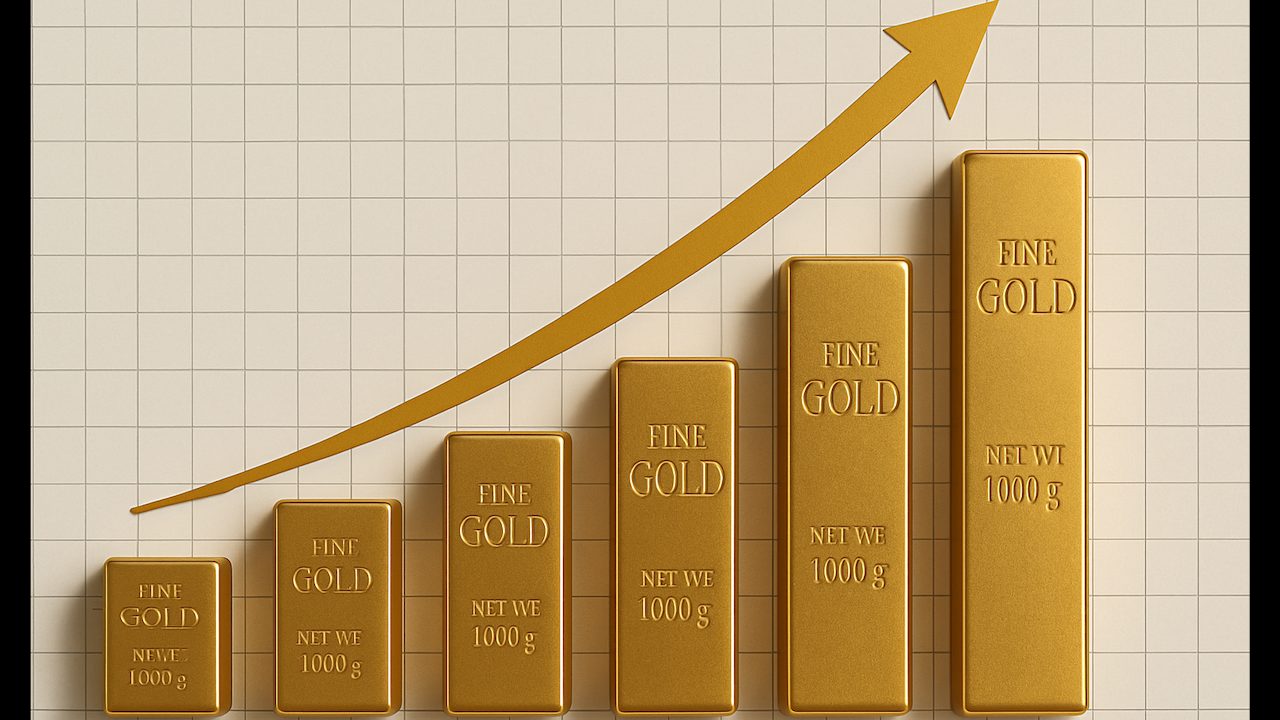(Mike Maharrey, Money Metals News Service) Gold inflows into ETFs through the first half of 2025 hit levels not seen since the pandemic, and that trend continued through July.
According to the latest data compiled by the World Gold Council, 22.8 tonnes of gold valued at around $3.2 billion flowed into gold-backed funds globally last month.
Gold-backed ETFs now hold 3,639 tonnes of gold, the highest level since August 2022.
July gold inflows pushed total assets under management by gold ETFs 1 percent higher to $386 billion, the second straight month-end record.
The World Gold Council noted that ETF gold inflows are on pace for their second-biggest year on record.
North American-based ETFs led the way in July, expanding their gold holdings by 12.5 tonnes, totaling $1.4 billion. This was a slight slowdown from the previous month. The World Gold Council attributed the ebb to “a short-term rebound in the dollar and a rise in rates, as expectations for future Fed cuts continue to be pushed further out.”
There was also some profit-taking as investors rotated from a safe-haven position back into equities after the announcement of U.S. trade deals with the EU and Japan.
European ETFs also reported strong gold inflows of 10.9 tonnes. UK-based funds dominated, while German funds reported outflows of gold.
According to the WGC, “Gold’s outsized strength in British pounds (GBP) attracted local investors: weaker-than-expected economic data and the cooling labor market, among other factors, kept the local currency on a back foot and contributed to rising safe-haven demand.”
Swiss and French funds also reported strong inflows amid tariff uncertainty before the trade deal was reached at the end of the month.
Rising bond yields in Germany created some headwinds for gold.
Asian funds reported a 0.8-tonne increase in gold holdings. Chinese funds shed gold as investor risk appetite increased. This was countered by gold inflows into Japanese and Indian ETFs.
Funds in other regions, including Australia and Africa, reported a 1.5-tonne outflow of gold.
ETFs are a convenient way for investors to play the gold market, but owning ETF shares is not the same as holding physical gold.
ETFs are relatively liquid. You can buy or sell an ETF with a couple of mouse clicks. You don’t have to worry about transporting or storing metal. In a nutshell, it allows investors to play the gold market without buying full ounces of metal at the spot price.
Since you are just buying a number in a computer, you can easily trade your ETF shares for another stock or cash whenever you want, even multiple times on the same day. Many speculative investors take advantage of this liquidity.
But while a gold ETF is a convenient way to play the price of gold on the market, you don’t actually possess any gold. You have paper. And you don’t know for sure that the fund has all the gold either, especially when the fund sees inflows. In such a scenario, there have been difficulties or delays in obtaining physical metal.
Gold Trading Volumes
After hitting the highest semi-annual average on record in H1, gold trading volumes increased again in July, averaging $297 billion per day. That was a 2.3 percent month-on-month increase.
Over-the-counter (OTC) volumes averaged $154 billion per day last month, 2 percent higher than in June.
While OTC volumes were below the H1 average in July, they were still far above the 2024 average of $128 billion per day.
Exchange-traded volumes also rose last month, averaging $137 billion per day. A notable increase in COMEX activities was a primary driver.
Total net longs on the COMEX rose 12 percent month-on-month to 676 tonnes in July. Money managers increased their net gold longs by about 4 percent.
According to the World Gold Council, there has been some evidence of profit-taking over the last couple of months; however, “positioning now appears to have reset.”
Mike Maharrey is a journalist and market analyst for Money Metals with over a decade of experience in precious metals. He holds a BS in accounting from the University of Kentucky and a BA in journalism from the University of South Florida.

